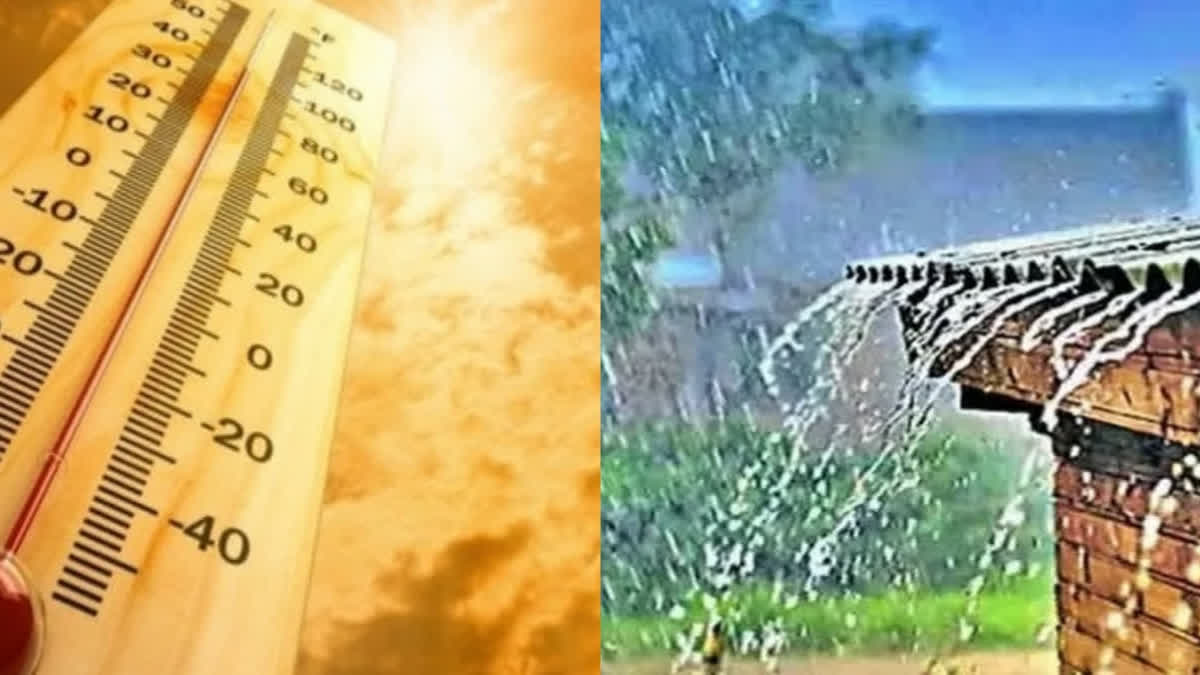Hyderabad: The southwest monsoon 2023 ends on September 30 with India ending the season as ‘below-normal’. As of September 29, countrywide cumulative rainfall deficiency for the country stood at 6% of the long-period average (LPA) of the total rainfall for the season. The country has recorded a total of 814.9 mm of rain against the normal average of 865 mm.
Monsoon 2023 began its journey under the shadow of evolving El Nino in the Pacific Ocean. Experts have already warned of less monsoon rains during the second half when El Nino gains intensity. Nonetheless, the monsoon is in itself a strong phenomenon that can drive the rains. That is what we saw in September, with two low-pressure areas reviving the monsoon rains, saving the country from drought.
The onset of monsoon 2023 was influenced by the presence of El Nino in the Pacific Ocean. Experts had predicted reduced rainfall during the latter half of the season as El Nino intensified. However, the monsoon showcased its strength, particularly in September, as two low-pressure systems rejuvenated the rains averting drought conditions.
Throughout the four-month monsoon season, extreme weather events played a significant role. The slow start in June due to a delayed monsoon onset resulted in a 10% rainfall deficit. Cyclone Biparjoy in the Arabian Sea hindered monsoon progress in June, causing double-digit rainfall deficiency. The absence of monsoon rains led to oppressive heatwaves in East India, exacerbated by global warming's evaporation and moisture impact.
August, a crucial month for the monsoon, saw historically low cumulative rainfall, primarily due to prolonged 'break monsoon' conditions. Several regions, including Gujarat, Kerala, Rajasthan, Karnataka and Telangana, experienced significant rainfall deficits during this month.
Also read: 'This summer’s swelter was a global record breaker for high heat': Meteorologists
Region-wise rainfall
Major contributors in the monsoon rainfall that include parts of South Peninsula India and East & Northeast India remained deficit throughout the season. State-wise, Kerala reported rainfall deficiency as high as -36%, followed by Jharkhand at -27% and Bihar -24%.
Out of 36 meteorological subdivisions in the country, 26 subdivisions recorded normal rainfall, constituting 73% of the area of the country. Meanwhile, seven subdivisions recorded deficit rainfall that covers 18% of the area of the country. Only three subdivisions witnessed excess rainfall amounting to an area of 7%.
Meanwhile, major contributions in the monsoon 2023 came from unusual regions of the country like West Rajasthan, which recorded 42% of excess rainfall, Saurashtra and the Kutch region in Gujarat reported 48% of excess rains, Himachal Pradesh 19%, and Telangana 15%. However, it is worth noting that these excess rains were all due to very heavy to extremely heavy rainfall events throughout the season.
However, the monsoon revived in September with a notable recovery in rainfall deficiency from -11% on September 1 to -6% on September 29. Regionally, parts of South Peninsula India and East & Northeast India faced consistent rainfall deficits throughout the season.
Climate change impact
Climate change has amplified the variability of monsoon rainfall, making it more erratic and less predictable. This shift in seasonal patterns increases the risk of droughts and floods, posing significant challenges to water and food security. While the waxing and waning of monsoon rainfall is very normal, climate change has doubled the variability factor of any weather event, be it extreme rains or heatwaves.
The floods in Himachal Pradesh this year were one such example, which killed at least 100 people due to landslides, flash floods and property collapses in July 2023. Extremely heavy rains in Haryana, Punjab and Delhi forced thousands to flee their homes. According to the India Meteorological Department, New Delhi had the highest rains in the past 40 years.
Dr Roxy Mathew Koll, Climate Scientist, Indian Institute of Tropical Meteorology, states, “The capacity of air to hold moisture for a longer time has increased due to constant rise in land and sea temperatures. This, in turn, has influenced the intensity of monsoon rains. For instance, the Arabian Sea has warmed since January, infusing more moisture over northern and northwestern India. This continuous supply of moisture fed to the weather systems leads to increased rains, which also results in extreme weather events.”
El Niño impact
El Niño, a recurring phenomenon, was anticipated to influence the monsoon in 2023. Although June and July managed to escape its effects, weather models suggest its persistence through the upcoming months, potentially leading to weakened monsoon rains in India.
Also read: Traveling in monsoons? Follow these steps to stay safe and enjoy the pleasant weather
In August 2023, India experienced one of the lengthiest 'break monsoon' periods in decades, affecting the typical monsoon pattern and rainfall distribution. The spatial distribution of monsoon rains in 2023 has been irregular with certain regions receiving excess rainfall while others faced significant deficits.
GP Sharma, President- Meteorology and Climate Change, Skymet Weather, said, “In the beginning itself, there were fears of under performance on account of growing El Niño, mid-way through the season. El Niño generally does not spare monsoon unequivocally. In 80% of El Niño events, the monsoon goes corrupt to finish with ‘drought’ or ‘below normal’. Out of these, a large chunk of 60% of occasions face the curse of drought, with rainfall deficiency in excess of 10% of LPA.”
Prolonged break-Monsoon conditions
The country witnessed its third longest break-monsoon period of the century in August 2023, after 2002 and 2009. In fact, the month saw two spells of back-to-back break-monsoon conditions. The initial spell that began on August 7 ended after 12 days on August 18. The second spell started on August 27 and lasted till early September.
These anomalies highlight the changing climate's impact on monsoon patterns, underlining the urgent need to address climate change to ensure a more stable and reliable monsoon system in the future.
Also read: Monsoon may start retreating from northwest India by September 25: IMD


